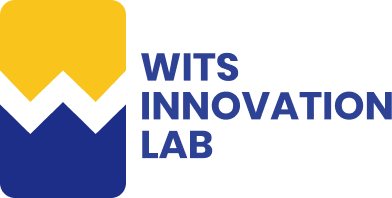The Indian mobility sector is on the brink of a major revolution with ONDC's integration. With this pioneering step, the industry will witness a truly new era of competition and inclusion, pushing the boundaries of innovation by integrating the capabilities of technology and operations. This article is devoted to explaining the technical processes, strategic advantages, and expected outcomes of ONDC's venture in the mobility segment and understanding its profound impact on the industry.
ONDC: The Game Changer in Mobility
The ONDC's commitment to intruding into the mobility sector of urban transportation in India is a turning point. First, by onboarding Namma Yatri, a Bengaluru-based ride-sharing service, and having conversations with various other MSPs (mobility service providers) across the various cities, the ONDC is in the process of opening the mobility space to the rest. This risky decision disrupts the existing monopolies owned by key players such as Uber and Ola, announcing a change of epoch with more equitable, competitive, and creative transport solutions for cities.

Technical Foundations of ONDC in Mobility
The core concept of ONDC's launching into mobility is to unite the digital system, in which many different types of mobility services, such as auto-rickshaws, metro, and buses, can be found and easily accessed through one single interface. This innovative approach unfolds by adopting a uniform Application Programming Interface (API), which forms the pivot for interacting among various MSPs within the ONDC. These APIs are very well-structured, with the primary aim of streamlining the data transmission and transaction processes on all platforms, thereby making it easy for the users to find and use mobility services of their choice, no matter the app they choose.
ONDC's technical architecture has been developed to support several types of mobility options and the capacity to add new services at any future point. This also covers a strong infrastructure that can process real-time data, supports instant booking options, and handles dynamic pricing mechanisms. In terms of data security and privacy, strict protocols to secure user data and transaction details are in place. Therefore, people's confidence in the products and services offered is heightened.
ONDC's technical architecture has been developed to support several types of mobility options and the capacity to add new services at any future point. This also covers a strong infrastructure that can process real-time data, supports instant booking options, and handles dynamic pricing mechanisms. In terms of data security and privacy, strict protocols to secure user data and transaction details are in place. Therefore, people's confidence in the products and services offered is heightened.
Operational Synergies and Market Innovation
Collaboration rather than competition is the core ethos of Open Network for Digital Commerce (ONDC), which operates within the mobility sector. ONDC tries to unify the different modes of transport into one system to smoothen the user experience and make city traffic efficient and comfortable. This cooperation model, which eases users' booking and payment process and opens up new horizons for MSPs by reaching a wider customer spectrum, is highly recommended.
In addition, ONDC's open platform architecture becomes a catalyst for innovation, which in turn allows new players with innovative mobility services to compete in this market. This platform brings a level playing field to all operators, especially startups and small businesses, as it gives them a channel to showcase their services side-by-side with more established players, contributing to a unique and diverse transit landscape.
In addition, ONDC's open platform architecture becomes a catalyst for innovation, which in turn allows new players with innovative mobility services to compete in this market. This platform brings a level playing field to all operators, especially startups and small businesses, as it gives them a channel to showcase their services side-by-side with more established players, contributing to a unique and diverse transit landscape.
Transformative Impact on Urban Transportation
ONDC's strategic approach of venturing into the field of mobility will enable it to address and partially eliminate the prevalent problems plaguing urban transport systems. This could be viewed as the main advantage of this measure as it can solve the surging pricing and cancellation problems. By supplying the whole range of transport choices on a single platform, consumers can choose from a wider selection of options, which may result in higher competition among various transit agencies, consequently leading to better prices and better service quality.
Also, through ONDC's integrated approach, the concept of multi-modal transport is being promoted, which helps me make smoother and more efficient changes between different modes of transportation. This maximizes travel routes, reduces transit times, and sheds light on how a city can be decongested. ONDC supports the use of public transport options and the improvement of interchangeability by providing various transportation services. This leads to a decline in the number of cars on the road and carbon emissions. This endorses the overarching goal of sustainable urban development, making ONDC a key player in the transition to a greener and more sustainable urban movement.
Also, through ONDC's integrated approach, the concept of multi-modal transport is being promoted, which helps me make smoother and more efficient changes between different modes of transportation. This maximizes travel routes, reduces transit times, and sheds light on how a city can be decongested. ONDC supports the use of public transport options and the improvement of interchangeability by providing various transportation services. This leads to a decline in the number of cars on the road and carbon emissions. This endorses the overarching goal of sustainable urban development, making ONDC a key player in the transition to a greener and more sustainable urban movement.
Technical Challenges and Interoperability
The integration challenge remains one of the most significant tasks in creating a platform that enables uniform interoperability among numerous MSPs using different technologies and business models. The fundamental strategy that the ONDC is using is the development of powerful, reliable, and scalable Application Programming Interfaces (APIs), which are capable of facilitating the creation of product data and transactions in real-time across the ecosystem. The technical undertaking is not limited to acquiring a detailed technical background involving different technologies utilized by various MSPs but also requires an agile style of API development that may be adapted to the unpredictable challenges of mobility.
Moreover, the fact that these APIs must be able to handle large volumes of data and transactions without affecting speed or reliability makes the problem more elaborate. This involves efficient data processing, cybersecurity, and robust system scalability, hence the creation of robust and resilient digital infrastructure. Additionally, the APIs have to be developed user-centrically with a focus on the end-to-end experience of booking and managing rides, which is meant to be seamless and intuitive, no matter the underlying complexity.
Moreover, the fact that these APIs must be able to handle large volumes of data and transactions without affecting speed or reliability makes the problem more elaborate. This involves efficient data processing, cybersecurity, and robust system scalability, hence the creation of robust and resilient digital infrastructure. Additionally, the APIs have to be developed user-centrically with a focus on the end-to-end experience of booking and managing rides, which is meant to be seamless and intuitive, no matter the underlying complexity.
Regulatory Hurdles and Data Privacy
Technical intricacies aside, data privacy and regulatory compliance will remain ONDC's major hurdles. The digital mobility space is one of the most regulated sectors, with laws and regulations to protect consumers, ensure level playing fields, and prevent privacy invasion. Since ONDC's stability depends on the adoption and confidence of users and MSPs, respectively, it is therefore mandatory to set standards on par with them.
The task is ambitious because we need to ensure that the code complies with every jurisdiction within the regulatory framework, where each piece might have unique regulations and requirements. This entails a proactive approach to regulatory interaction, including ongoing talks with government authorities, industrial associations, and legal practitioners to devise regulations that protect consumers while maintaining industry innovation.
The task is ambitious because we need to ensure that the code complies with every jurisdiction within the regulatory framework, where each piece might have unique regulations and requirements. This entails a proactive approach to regulatory interaction, including ongoing talks with government authorities, industrial associations, and legal practitioners to devise regulations that protect consumers while maintaining industry innovation.

Opportunities for Innovation and Growth
Nevertheless, the great benefits that ONDC can explore in this sector are expansive and manifold. For MSPs, ONDC is an opportunity worth grabbing to get to the wider market without investing in technology infrastructure. The MSPs can easily leverage the ONDC platform to instantly scale up the breadth of their user base and hence improve their visibility and reach. This platform, in addition, is designed in such a way that it opens the room to small players and new entrants who can go toe to toe with the big guys, thus fostering a more vibrant and diverse mobility ecosystem.
The ONDC integration of an accessible, reliable, and efficient range of services enables users to enjoy a better transportation experience. The possibility of using one interface to compare and choose among many mobility options not only brings extra convenience but also gives users more power in making travel choices. This may result in a more competitive approach to the market, better service quality, and a considerable decrease in the typical inconveniences of urban mobility.
Besides that, it is the starting point for a fair and green urban mobility reality. ONDC makes it easier for people to access a wide range of transportation modes. As a result, traffic congestion is reduced, and carbon emissions are significantly decreased. This aligns with the broader objectives of sustainable development and city resilience, putting ONDC in the spotlight as a key figure in the change towards a greener and more sustainable urban transport policy.
The ONDC integration of an accessible, reliable, and efficient range of services enables users to enjoy a better transportation experience. The possibility of using one interface to compare and choose among many mobility options not only brings extra convenience but also gives users more power in making travel choices. This may result in a more competitive approach to the market, better service quality, and a considerable decrease in the typical inconveniences of urban mobility.
Besides that, it is the starting point for a fair and green urban mobility reality. ONDC makes it easier for people to access a wide range of transportation modes. As a result, traffic congestion is reduced, and carbon emissions are significantly decreased. This aligns with the broader objectives of sustainable development and city resilience, putting ONDC in the spotlight as a key figure in the change towards a greener and more sustainable urban transport policy.
Conclusion
The Open Network for Digital Commerce is a landmark event that takes India's urban transportation to another level of evolution. It addresses open commerce principles and aims to establish an environment where the mobility system would be less restrictive, efficient, and innovative. Nevertheless, these barriers can be overcome as the positive impacts of increased competition, quality service provision, and ecological city development cannot be refuted. With the ONDC evolving and widening its wings, its impact on the mobility industry will be ground-breaking, forming new ways of thinking about and engaging with urban transportation systems.

Written by / Author
Manasi Maheshwari
Found this useful? Share With
Top blogs
Most Read Blogs
Wits Innovation Lab is where creativity and innovation flourish. We provide the tools you need to come up with innovative solutions for today's businesses, big or small.
© 2026 Wits Innovation Lab, All rights reserved
Crafted in-house by WIL’s talented minds

